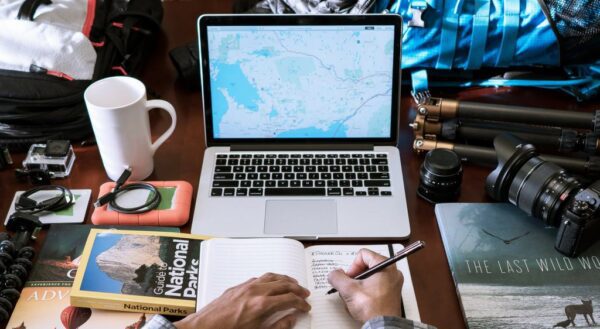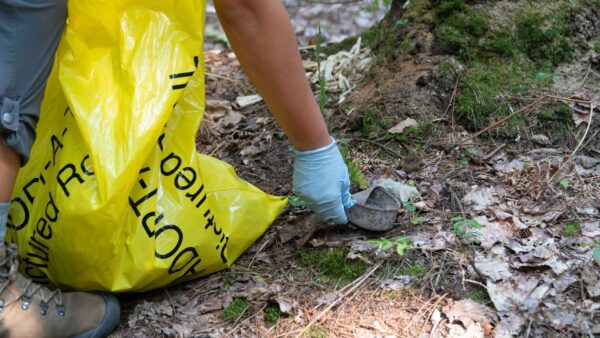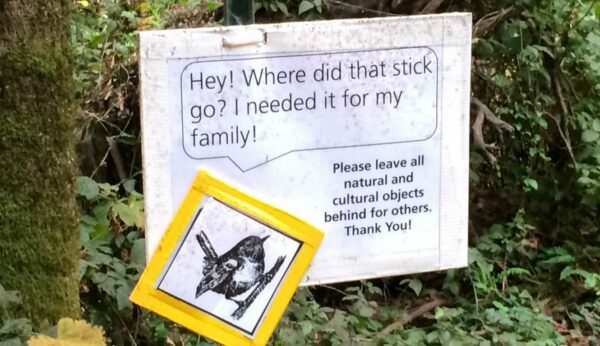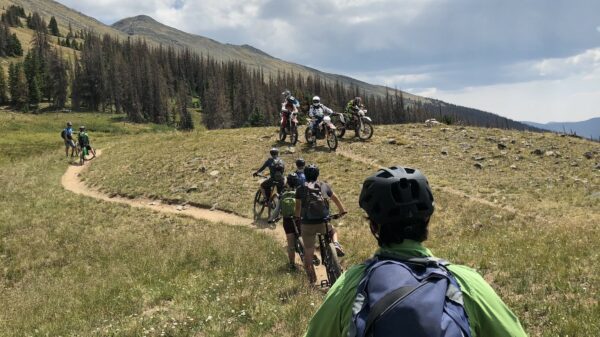The Leave No Trace initiative guides outdoor enthusiasts to minimize their environmental impact, fostering responsible practices for the preservation of natural spaces.
At Down Under Discoveries, we not only adhere to the Leave No Trace principles but also educate all participants about the policy, ensuring a shared commitment to ethical and sustainable exploration.


7 PRINCIPLES OF LEAVE NO TRACE
1. Plan ahead and prepare!

Integral to the Leave No Trace ethos is the principle of planning ahead and preparing for outdoor adventures. This involves aligning your goals and those of your group, gathering local information, and communicating expectations. Acquiring the necessary technical skills, first aid knowledge, and equipment enhances the chances of a successful trip.
Incorporating Leave No Trace into your plans includes choosing an appropriate destination and allocating ample time for travel and camping. It's crucial to be prepared for potential challenges and be willing to adapt—whether that means sitting tight or turning back in the face of danger or injury. This foresight ensures that you won't compromise Leave No Trace techniques for safety's sake. For example, poor planning or disregarding weather conditions can turn a seemingly easy bushwalk into a risky endeavor, highlighting the importance of maintaining environmental stewardship even in challenging situations.
2. Travel and camp on durable surfaces!

Every footstep leaves a distinct impact on the environment, affecting young trees, meadow grass, leaf litter, and fragile soil. Unfortunately, trampling can lead to vegetation damage and soil erosion across various ecosystems, with recovery times varying from one year to as long as 25 years. Beyond visible impacts, trampling disrupts habitats for insects, earthworms, mollusks, and fungi crucial for soil fertility.
To mitigate these effects, it's essential to choose durable surfaces resistant to impact, such as rock outcrops, sand, gravel, dry grasses, snow, and water. Conversely, avoiding non-durable surfaces like soft plants, riparian zones, muddy sites, and fragile soil layers is crucial. When hiking along shorelines, opt for durable surfaces like hard sand or gravel during low tide to minimize impact on coastal ecosystems. In popular areas, concentrate use on designated tracks, established campsites, and developed sites like trailheads and picnic areas.
This strategic approach minimizes disturbances to soils and vegetation, ensuring a harmonious coexistence with the environment.
3. Dispose of Waste Properly!

Every outdoor user bears the responsibility to leave no trace, beginning with a thorough cleanup before departure. Inspecting your campsite and rest areas for any rubbish or spilled foods is essential. Pack out all rubbish and kitchen waste, including leftovers, emphasizing the importance of planning meals to minimize messy, smelly rubbish.
Critical to wildlife preservation is the proper disposal of kitchen waste, as even seemingly harmless items like bacon grease can be detrimental. Avoid relying on fire to dispose of waste, as half-burned or buried rubbish can attract animals, making the site unattractive to others and posing risks to wildlife. Overlooked rubbish not only mars the landscape but can also prove deadly. Mindful of the impact on wildlife, refrain from leaving behind items like plastic six-pack holders, plastic bags, fishing lines, lures, and nets.
Carrying out your rubbish in plastic bags, and perhaps picking up others', ensures a Leave No Trace commitment. Before moving on from a camp or resting place, diligently search for 'micro-rubbish,' including bits of food, cigarette filters, and organic litter, to uphold the principles of Leave No Trace.
4. Leave What You Find!

Natural areas attract visitors seeking to explore the mysteries and surprises of the environment. "Leave What You Find" embodies the ethos of passing the gift of discovery to those who follow. Refraining from disturbing rocks, shells, plants, feathers, fossils, artifacts, and other objects of interest ensures the preservation of nature's wonders for future generations.
A particularly crucial aspect of this principle is the respectful approach to aboriginal rock art and sites of significance. Understanding the importance of leaving these untouched preserves the cultural and historical value of these areas.
Ultimately, "Leave What You Find" is a commitment to retaining the special qualities of every wilderness area for the long term, acknowledging that the missing elements disturb us the most. It encapsulates the essence of responsible exploration and environmental stewardship.
5. Minimise Campfire Impacts!

Wildfires in Australia are often ignited by uninformed campers. "Responsible Fire Use" emphasizes understanding controlled burns, guided by experienced land managers and Indigenous practices. These controlled burns aim to reduce the risk of uncontrolled wildfires and promote forest regeneration.
Careless campfire use has marred the natural appearance of recreation areas, leading to soot-scarred rocks and depleted landscapes. Beyond aesthetics, uncontrolled wildfires during hot, dry periods pose threats to habitats, property, and lives. Recognizing the evolving outdoor traditions, this principle emphasizes that campfires are no longer essential for comfort or food preparation, advocating for a mindful approach to fire in natural settings.
6. Respect Wildlife!

Encounters with wildlife evoke tales of wonder, yet global wildlife faces threats from habitat loss, pollution, over-exploitation, and more. Protected lands provide a sanctuary, but wild animals need responsible recreators to enhance their survival.
Understanding that animals react differently to humans—some adapt, others flee or face risks from human food and rubbish—underscores the need for mindful outdoor recreation. As outdoor activities span large areas and various times of the year, their impact on wildlife can be disruptive.
Recognizing our responsibility for coexistence, we must strive to promote the well-being of wildlife rather than contributing to the challenges they already endure.
7. Be Considerate of Your Hosts & Other Visitors!

In today's world, we navigate the delicate balance between honoring the rights of traditional landowners and sharing the wilderness with a diverse range of recreational enthusiasts. With limited land available, it's impractical for every category of enthusiast to claim exclusive use of trails, bush, lakes, rivers, and campgrounds.
Despite this reality, discussions on outdoor "etiquette" are often overlooked. There is a reluctance to scrutinize personal behaviors, particularly in the wilderness where a sense of freedom is paramount to many.
Achieving harmony in outdoor spaces requires us to consider not only our rights but also our responsibilities, fostering a shared understanding of respectful and sustainable recreation for everyone.
